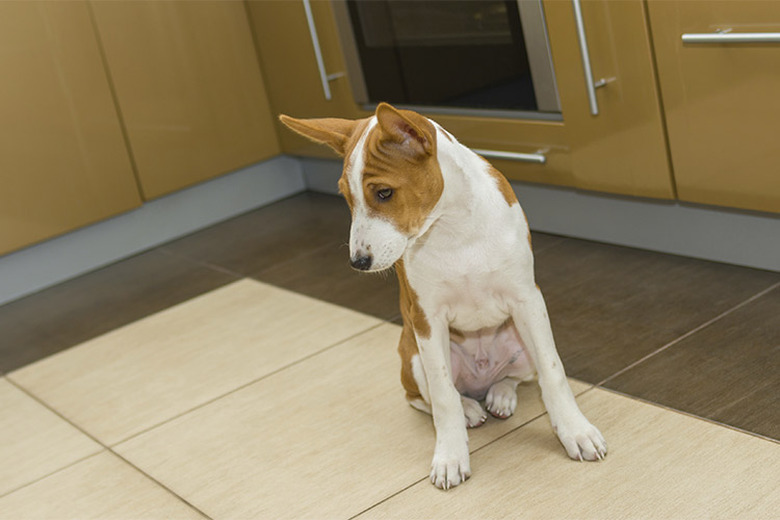Should I Restrict My Puppy To One Area Of The House?
If he could talk, your puppy would probably tell you he's meant to run, jump, sniff and roam throughout the house freely. Puppies are well-known liars. Keeping your youngster in one area of the house prevents him from getting in trouble, but confining him to an empty room all day is a big no-no.
Trust Level
Itty-bitty canines are not to be trusted. Don't be fooled by their innocent and cute facade — they have devious plans floating around their minds, from the best way to shred your curtains to finding the ideal pee spot on your carpet. While your puppy has yet to learn good canine behavior, you need to keep him with you in the same area of the house at all times. The Humane Society of the United States suggests keeping him on a leash while inside. Doing so enables you to take him outside before he has an accident, correct any improper chewing habits and generally stop bad behaviors in their tracks. Once your pup is house-trained and isn't chomping on anything and everything, let him have more and more reign of the house while you're there, but always check up on him frequently. If you do keep your pal on a leash, always have hold of the leash.
Leaving the House
When you're not home, your puppy needs to stay in one area of the house and inside his crate at all times, even if he's house-trained. Letting him roam from room to room while you're not home is begging for a disaster. He'll likely destroy your house, whether from teething pains, boredom or fear. Puppies typically feel secure in their crates, and they don't have the chance to act out while in them. It's also a good idea to keep him in his crate if you have guests over and you cannot keep an eye on him.
Interaction
Preventing your pup from roaming the house doesn't mean you can toss his furry butt in a small room or keep him in his crate all day. Puppies need lots of human interaction. If you're home, he should mostly be around you, walking, running, playing or cuddling. If you're busy with something around the house, keep him confined to the same room as you're in by blocking off other rooms with baby gates, chairs, laundry baskets or something similar. If you absolutely cannot watch him, take him to his crate but keep him in there as little as possible.
Safe Rooms
When the time comes for your young pooch to walk around the house alone, set him up for success. Only allow him into rooms where he can't get into much trouble, at least at first. Pick up items that are close to floor level, such as shoes and anything on low shelves. Keep wires hidden behind furniture or funnel them into PVC pipe so he can't gnaw on them. If you can't make a certain room particularly safe for your puppy, deny him access by closing a door or throwing up a gate.
By Chris Miksen
References
The Humane Society of the United States: Chewing: The Whys and Hows of Stopping a Gnawing Problem
Humane Society of Utah: House-Training Puppies
American Animal Hospital Association: Electrical Cord Chewing
About the Author
Located in Pittsburgh, Chris Miksen has been writing instructional articles on a wide range of topics for online publications since 2007. He currently owns and operates a vending business. Miksen has written a variety of technical and business articles throughout his writing career. He studied journalism at the Community College of Allegheny County.
